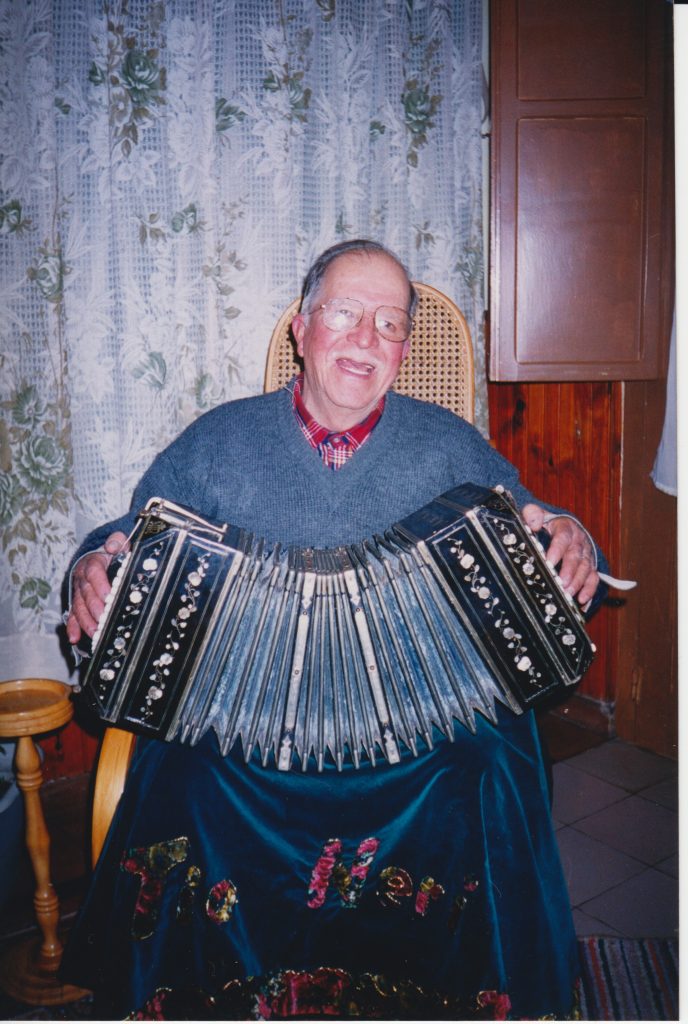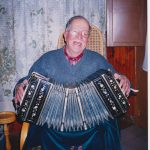Artista Carlos Neri Suárez Quevedo

Neri Suárez (1930) nació en la ciudad de Artigas. Sus padres eran oriundos de Itapororó, Rio Grande do Sul (entre Uruguaiana y Alegrete) y ambos ejecutaban el acordeón de ocho bajos. Los Suárez, en Brasil, acostumbraban a hacer bailes todos los domingos.
Sobre las habilidades musicales de su padre, comenta: «¡Qué oído tenía para silbar, silbaba que era cosa seria!».[1] Suárez también aprendió de oído y a los trece años comenzó a tocar el bandoneón. «Le robaba a mi hermano, y cuando se dio cuenta yo ya estaba tocando. De oído, ¿no? Porque yo lo veía y él me enseñó los acordes y así empecé».[2]
En 1945 comenzó a tocar en eventos bailables de la zona junto a sus hermanos Blanco y Máximo, que habían estudiado música formalmente.
Sobre su repertorio, Suárez comenta: «Cuando aprendimos música, nosotros encargábamos al Palacio de la Música y venían las partituras. [3] Todas las semanas venían tres o cuatro. Nosotros escuchábamos radio y escuchábamos una pachanga, un merequetengue, que en aquellos años todo era [así], y nosotros éramos los primeros en tocar […] mambos, twist […]. Carnaval [era] marcha y samba. Nosotros escuchábamos la música y venían unas partituras del Brasil con la música y la letra. Y ahí escuchábamos los que estaban de moda, porque la radio tocaba, la radio brasileña y nosotros escuchábamos. Después nosotros sacamos la música y llevamos la letra. […]. Nosotros repartíamos la música y anunciábamos tal marcha que vamos a tocar. Tocamos y después uno cantaba. Cuando empezó el Carnaval todos sabían cantar».[4]
Neri aprendió este enganchado de dos sambas observando a su hermano, Blanco. Conoce las melodías como Não me toque y O Peixinho.
[1] Comunicación personal, 2002.
[2] Comunicación personal, 2002.
[3] Casa de música fundada en Montevideo en el año 1919.
[4] Comunicación personal, 2002.
Neri Suárez (1930) was born in the city of Artigas, and his parents were from Itapororó, Rio Grande do Sul (between Uruguaiana and Alegrete) and both played the eight-bass button accordion. The Suárez family, back in Brazil, used to hold dances every Sunday.
Regarding the musical abilities of his father, he comments, «what a good ear he had for whistling, he was an amazing whistler».[1] Suárez also learned by ear and at the age of thirteen he started playing bandoneon. According to him, «I would steal my brother´s bandoneon, and when he found out I already knew how to play bandoneon. I learned by ear, because I watched him and then he taught me the chords and that was the way I started».[2]
In 1945 he began to play dances with his brothers Blanco and Máximo who had studied music formally.
Regarding his repertoire, Suárez comments, «when we learned music, we would order sheet music from Palacio de la Música and three or four would arrive each week. We would listen to the radio and when we heard a pachanga, a merequetengue – in those days it was all like that – we were the first ones to play them […] mambos, twist […]. Carnaval (was) marcha and samba, we would listen to the music and sheet music would come from Brazil with the music and the lyrics. We would listen to what was in style, because that was what was played on the radio, Brazilian radio, and we would listen. Then we would learn the music, and bring the lyrics […] We would hand out the music and would announce that we were going to play such and such a song. We played and people would sing. When Carnaval started everybody knew the lyrics».[3]
Neri learned this medley of two sambas by observing his brother, Blanco. He learned the names of the melodies as Não me toque and O Peixinho.
[1] Personal communication, 2002.
[2] Personal communication, 2002.
[3] Personal communication, 2002.
Colecciones (2)
Colección 6. Maxixa / samba / candombe
En esta sección vemos la presencia de géneros musicales urbanos de raíz afroamericana en los repertorios de bandoneonistas que integraban…


